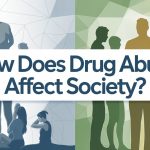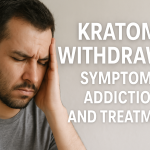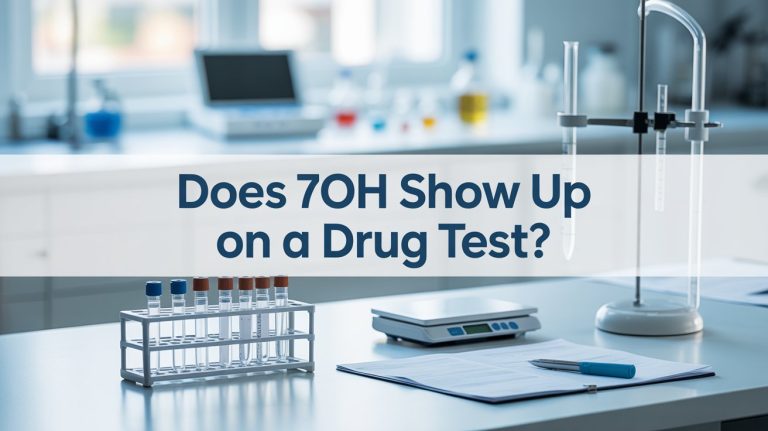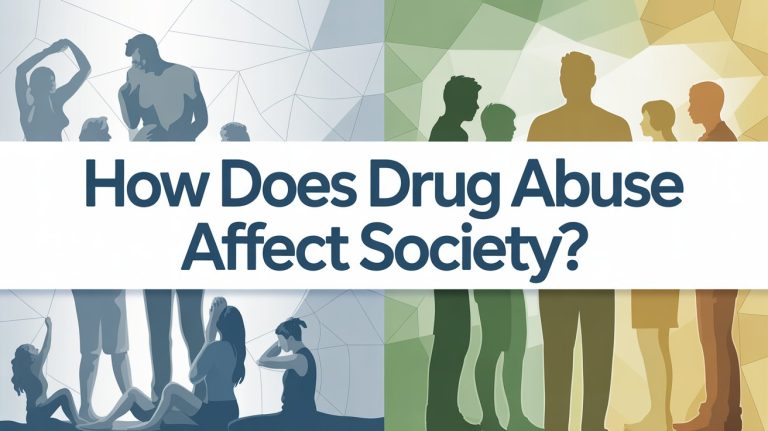In This Blog
- The length of time drugs stay in your system depends on many factors: the drug itself, the dosage, your age, your overall health, and more.
- They define half-life in terms of duration, but this does not indicate how long a drug can be detected in your system.
- Urine tests are the most common, while hair tests last the longest.
- No detox product can guarantee you’ll pass a test.
- The answer is early diagnosis and preventing long-term relapsing illness and disease and death.
How Long Do Drugs Stay in Your System? It is good to know how long drugs stay in your system, simply for personal, professional and health reasons. “The truth is, as the National Institute on Drug Abuse (NIDA) points out, even two people who’ve taken the same drug can have very different times for which the drug will be detectable because things like metabolism, genetics, and overall health are specific to each person.
Drug testing is very pervasive in the U.S. and is used in employment, sports, and medicine. Reading the facts can help inform your reading and keep you out of the urban myths.
How Long Do Drugs Stay in Your System
A few factors determine. The answer to “how long do drugs stay in your system”:
- What Kind of Drug? Some drugs are formulated differently and processed out of your system differently.
- Dosage and Frequency: The more you use it, the longer it stays in your system.
- Body Weight and Metabolism: Higher metabolisms and less body fat can possibly process out the drug faster.
- Type of Test Administered: Chart of detection windows, by test type.
- Overall Health: A Disease of the liver or kidney can reduce the ability of body to remove toxins in its natural capacity.
How long two different people might be positive for the same drug could vary because of genetic factors and health conditions, the National Institute on Drug Abuse (NIDA) said. Preliminary estimates from the Centers for Disease Control and Prevention (CDC) indicate that drug overdose deaths climbed to greater than 107,000 in the United States, emphasizing the paramount significance of awareness regarding substance use.
Factor | Impact on Detection Time |
Frequency of use | Frequent users retain drugs longer |
Body fat percentage | Fat-soluble drugs like THC last longer |
Liver/kidney function | Slower clearance with medical conditions |
Test type | Hair > urine > saliva > blood |
100% Confidential Support is Available 24/7
No matter what you’re going through, you’re not alone. Our dedicated team is here to provide a safe, judgment-free space where you can talk openly and honestly. Whether you need emotional support, resources, or just someone to listen.
We’re here for you—completely confidential and always respectful of your privacy. Call us today!
What is Drug Addiction
Drug addiction is a chronic disease that repeats and causes changes in the part of the brain that involves reward and decision-making. Over 20 million Americans currently live with addiction, according to the Centers for Disease Control and Prevention (CDC). Addiction is linked to chronic diseases, such as heart failure, liver disease and mental health.
Signs of addiction can include:
- Taking too much of a drug for your intended need.
- Experiencing intense cravings.
- Suffering withdrawal when you stop.
- Neglecting responsibilities
Orlando Treatment Solutions
Battling with Drug and Alcohol Addition? Remember, you are not alone and we are here to help you!
How To Pass A Drug Test
This is consistent with the Food and Drug Administration’s (FDA) that the only way to be sure of passing a drug test is to avoid using drugs. So don’t fall for myths about drinking gallons of water, downing shady “detox” kits or passing off someone else’s urine. These tend not to be effective, considering that labs have gotten so good at spotting tampering and might even test for signs of it, like levels of creatinine, pH or the temperature.
If you are worried and concerned about ways to pass a urine analysis test and are worried about how do you pass a urine analysis test, then be healthy and free of any drugs and permit your body to do the rest, which will naturally cleanse you.
How Do I Know I Should Go Through Drug Detox
Medical Detox May Be Required If:
- Use drugs daily or heavily.
- When you quit, you go through withdrawals.
- “No opioid with alcohol or benzodiazepines is safe, because they can cause potentially life-threatening withdrawal,” she said.
- Suffer from other health conditions that might make the process more complicated.
Unsupervised detox is dangerous, says the National Institutes of Health (NIH). It is a safer medical detox that lowers the risk of relapse.
Experts Advice
When you report for a drug test, let your doctor or the testing facility know up front if you’re on any prescription drugs.
Why are Drug Detox and Addiction Treatment Important?
My two personal criteria are that detox gets the drugs out of your body and that treatment addresses the reasons why you became addicted. As the NIDA (2023) found, science-based therapies like CBT, medication-assisted treatment have good dos and don’ts. When detox and therapy are combined, it leads to reduced relapse rates and the best opportunity for recovery.
Orlando Treatment Solutions
Battling with Drug and Alcohol Addition? Remember, you are not alone and we are here to help you!
What is a Drug’s Half-life?
A drug’s half-life is the time it takes for the quantity of the drug in a person’s blood to be reduced by one-half. According to the Food and Drug Administration, drugs that have a long half-life, e.g., diazepam, can stay in the body for weeks, and drugs with a short half-life, e.g. heroin, will be quickly eliminated. A drug’s half-life also determines when withdrawal symptoms will make themselves known.
List Of Half-life Drugs
The following are some well-known drugs and estimated average half-lives, according to information from reliable sources.
Drug | Half-life (average) | Source |
Heroin | 2–6 minutes | NIDA |
Cocaine | ~1 hour | NIDA |
Marijuana (THC) | 4–6 days (metabolites linger) | NIH |
Methamphetamine | ~11 hours | NIDA |
MDMA | ~8 hours | NIH |
Oxycodone | 3–5 hours | FDA |
Fentanyl | 3–12 hours | Centers for Disease Control and Prevention |
Xanax (Alprazolam) | 6–16 hours | FDA |
Valium (Diazepam) | 21–37 hours | FDA |
How Do People Try To Beat Drug Tests?
How Do People Try to Beat Drug Tests? Ways to beat the test range from dilution and flushing out one’s system to using products that will “mask” the drug in the urine, or to providing a substitute sample as an alternate. (This kind of concealment can work for a time, but the Centers for Disease Control and Prevention says it is seldom successful because of extremely sensitive laboratory tests.)
The Food and Drug Administration (FDA) is also warning that there can be both health and legal risks associated with using detox products that have not been approved by FDA for safety and effectiveness.
Detection Time In Urine For Various Drugs
Urine tests are the standard screens. Acknowledging that detection windows vary by the drug and the pattern of use, the Food and Drug Administration said so, too. Below are some testing estimations for different drugs; this varies depending on exactly what drug and how much of it is taken.
Drug | Typical Detection in Urine | Source |
Heroin | 1–3 days | FDA |
Cocaine | 2–3 days | NIDA |
Marijuana (THC) | 1–7 days (occasional), 30+ days (chronic) | NIH |
Methamphetamine | 2–3 days | Centers for Disease Control and Prevention |
MDMA | 2–4 days | NIH |
Oxycodone | 1–3 days | FDA |
Benzodiazepines | 2–7 days (short), up to 30 days (long-acting) | FDA |
How To Detox The Body
The detox process is the body’s way of expelling the drug. The National Institutes of Health (NIH, 2023) provides general guidelines for coping, such as staying well hydrated, eating a healthy diet, getting enough sleep, and being supervised by a health care provider.
Detox products that can be found online and promise quick fixes are dangerous, unregulated, and not approved by the Food and Drug Administration (FDA).
CALL US NOW
Orlando Treatment Solutions will iron out the details for you in a manner that will make you confident in your path to sobriety. That first simple call is your ticket to making Orlando Treatment Solutions your solution for addiction. Get the freedom from addiction that you deserve today.
Other Drug Test Methods (Blood, Saliva, Hair)
- Blood tests: Test current use (hours) but have a limited detection window.
- Saliva tests: Can be detected up to 48 hours. These are the most popular tests on the road.
- Hair tests: Can detect drug use over the past 90 days, according to the National Institute on Drug Abuse.
Long-term Health Risks of Final Analysis: Drug Use
Chronic drug habit affects long-term health. Here are some of the risks, from the National Institutes of Health:
- Stroke and heart disease
- Liver and kidney damage
- Increased cancer risk
- Mental health disorders
Factors that Influence Drug Detection
How long drugs stay in your system depends on several factors:
- Form of the drug: Short-acting vs. long-acting drugs.
- Dosage and frequency: Twice the size and more often, it lasts longer.
- Metabolism: The faster the metabolism, the faster drugs clear the system.
- Age and health: Advancing age and chronic illness retard elimination.
- Polydrug use: More than one drug can increase the window of detection.
The National Institute on Drug Abuse has pointed out that fat-soluble drugs, such as cannabis, are sequestered in fatty tissues; fat-soluble drugs are detectable in the system for a longer period of time than water-soluble drugs.

When to Get Help for Drug Addiction
You might need help if addiction is starting to affect your health or relationships or how you manage everyday life, or if you’ve had withdrawal symptoms and you still can’t quit. Early intervention, the C.D.C. says, significantly increases chances of long-term recovery. The National Institutes of Health (NIH) has also published evidence that connecting detox, rehab, and aftercare significantly decreases the risk of relapse.
When you are ready to make the next move toward a sober life, Orlando Treatment Solutions is here to help with compassionate, individualized, evidence-based treatment. Call now at (321) 415-3213 to begin your recovery on the right foot with the help that you deserve.
Final Analysis:
- Drugs differ in how long they stay detectable.
- Urine detection ranges from days to weeks.
- Half-life determines clearance, not exact detection.
- Safe detox includes hydration, nutrition, and medical support.
- Professional treatment improves long-term recovery.
- Public health experts emphasize that prevention, early intervention, and education are essential strategies for reducing addiction risks and preventing overdose deaths.
Disclaimer: This blog is for educational purposes only. It is not medical advice. For concerns about drug use or detox, consult a healthcare professional.
Related FAQs
Can I pass a urine test fast?
No. Abstinence is the only reliable method. Quick fixes like detox kits or excessive water do not guarantee a negative result, and labs can often detect tampering.
What affects detection time the most?
Key factors include the dose, frequency of use, body fat percentage, liver and kidney health, and the type of test being used.
Are hair tests more sensitive than urine tests?
Yes. Hair tests are more sensitive and can detect drug use for up to 90 days, which is much longer than urine tests.
How is half-life different from detection time?
Half-life is the time it takes for a drug’s concentration in the bloodstream to reduce by half, while detection time is how long its traces can be found in urine, saliva, or hair.
When should I choose medical detox?
Medical detox is important if you are using opioids, alcohol, or benzodiazepines and experience withdrawal symptoms, since supervised detox can prevent dangerous complications.



























